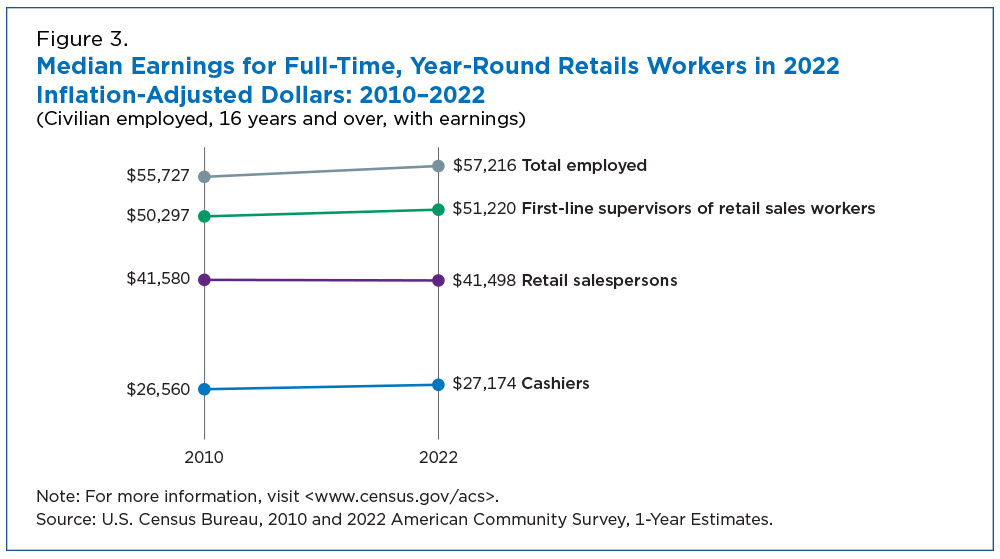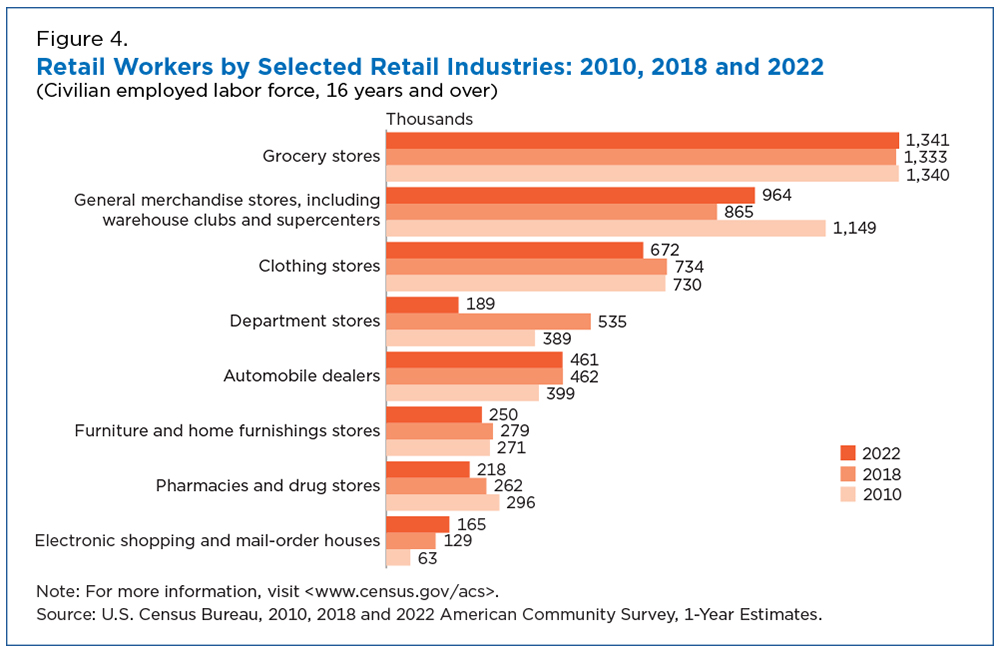Cashiers Among Lowest Paid Retail Workers
From assisting customers to ringing up sales, retail workers are the economic backbone of the nation’s retail industry, especially during the busy holiday shopping season.
In 2022, 9.2 million workers were employed as retail salespersons, cashiers or first-line supervisors of retail sales workers — collectively referred to as retail workers, according to the Census Bureau’s American Community Survey (ACS).
Cashiers were among the lowest-paid members of the retail workforce. In 2022, their median earnings ($27,174) were around 47% less than those of all full-time, year-round workers ($57,216).
Since 2010, the relative number of U.S. retail workers remained over 9 million, but their share of the total workforce fell from 6.9% in 2010 to 5.6% in 2022.
The decline is expected to continue. The Bureau of Labor Statistics projects employment in retail sales occupations will decrease by 2% between 2022 and 2032.
Retail Work is Common
Despite the decreases in the number and share of retail workers, retail remains a common occupation. In 2022, 3.1 million workers were retail salespersons and cashiers and around 3 million were first-line supervisors of retail sales workers.
Retail jobs ranked just below other large occupations such as miscellaneous managers, driver/sales workers and truck drivers and registered nurses.
Earnings
Between 2010 and 2022, the real median earnings of full-time, year-round workers increased by around $1,490 from $55,727 to $57,216. During the same period, median earnings of first-line supervisors of retail workers and cashiers increased by less than $1,000 each. The real median earnings of retail salespersons in 2022 was not statistically different from 2010.
Cashiers were among the lowest-paid members of the retail workforce. In 2022, their median earnings ($27,174) were around 47% less than those of all full-time, year-round workers ($57,216).
Brick-and-Mortar Stores to Internet Shopping
The number of retail workers in department stores fluctuated from around 389,000 in 2010 to about 535,000 workers in 2018 and dipping to about 189,000 workers in 2022. The decline in the number of workers could be related to recent closures of large retailers in the wake of the COVID-19 pandemic.
Research suggests that e-commerce will assume a larger role in the retail sector. The ACS shows that the number of retail workers in electronic shopping continually climbed between 2010 and 2022, from around 63,000 to around 165,000.
Challenges Ahead
Despite ongoing technological changes in the way customers interact with retail businesses and general consolidation of retail stores, the retail workforce remains a substantial part of the American labor market.
Yet, retail occupations remain among the lowest-paying jobs and retail workers often face not only limited opportunities for advancement but nonstandard and unpredictable work schedules.
Related Statistics
Stats for Stories
Stats for Stories
Stats for Stories
Subscribe
Our email newsletter is sent out on the day we publish a story. Get an alert directly in your inbox to read, share and blog about our newest stories.
Contact our Public Information Office for media inquiries or interviews.










